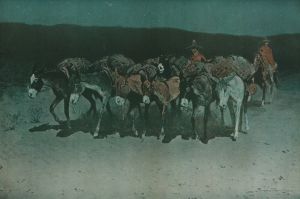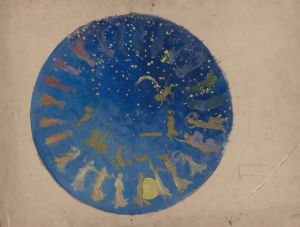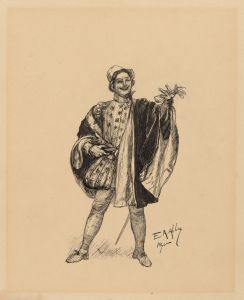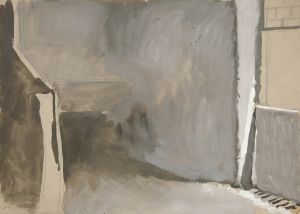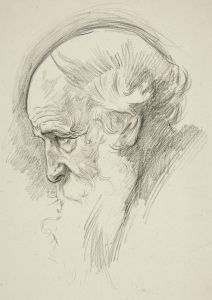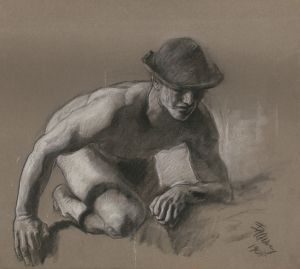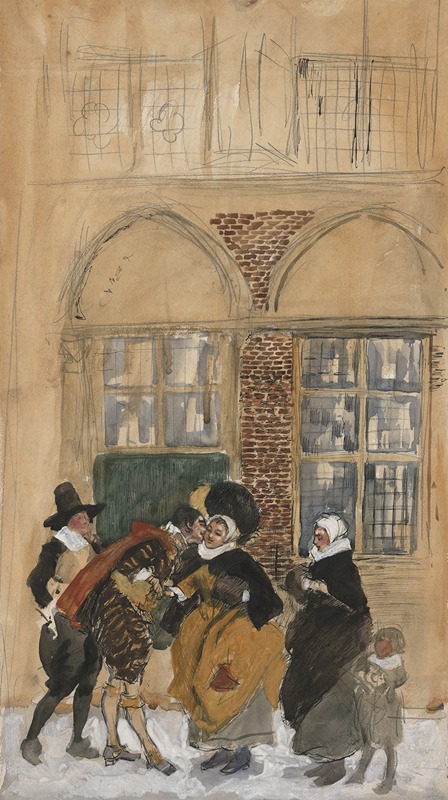
Study of figure scene in seventeenth century Dutch costume, possibly New Amsterdam
A hand-painted replica of Edwin Austin Abbey’s masterpiece Study of figure scene in seventeenth century Dutch costume, possibly New Amsterdam, meticulously crafted by professional artists to capture the true essence of the original. Each piece is created with museum-quality canvas and rare mineral pigments, carefully painted by experienced artists with delicate brushstrokes and rich, layered colors to perfectly recreate the texture of the original artwork. Unlike machine-printed reproductions, this hand-painted version brings the painting to life, infused with the artist’s emotions and skill in every stroke. Whether for personal collection or home decoration, it instantly elevates the artistic atmosphere of any space.
Edwin Austin Abbey was an American artist known for his illustrations and paintings, particularly those depicting scenes from Shakespearean plays and historical subjects. One of his works, "Study of figure scene in seventeenth century Dutch costume, possibly New Amsterdam," reflects his interest in historical themes and his meticulous attention to period detail.
Abbey was born in Philadelphia in 1852 and began his career as an illustrator for magazines such as Harper's Weekly. His work was characterized by a strong narrative quality and a keen eye for historical accuracy, which made him a popular choice for illustrating literary works. Abbey moved to England in 1878, where he became associated with the Pre-Raphaelite Brotherhood and developed a style that combined detailed realism with a romantic sensibility.
The painting "Study of figure scene in seventeenth century Dutch costume, possibly New Amsterdam" is a testament to Abbey's fascination with history and costume. The artwork depicts figures dressed in seventeenth-century Dutch attire, which suggests a setting related to the Dutch colonial period. New Amsterdam, the Dutch colonial settlement that later became New York City, was established in the early 17th century and was known for its diverse population and bustling trade.
Abbey's choice of subject matter reflects the broader 19th-century American interest in colonial history, as well as the romanticization of the past that was prevalent during the period. His attention to the details of costume and setting demonstrates his commitment to historical authenticity, a hallmark of his work.
While specific details about this particular painting are limited, it fits within Abbey's broader oeuvre of historical and literary subjects. His works often involved extensive research into the clothing, architecture, and customs of the periods he depicted, lending them an air of authenticity that was highly valued by his contemporaries.
Abbey's contributions to art were recognized during his lifetime, and he was elected to the National Academy of Design in 1902. He also received numerous commissions for murals and public works, including the Boston Public Library and the Pennsylvania State Capitol. His ability to capture the essence of historical periods with both accuracy and artistic flair made him a prominent figure in the American art scene of the late 19th and early 20th centuries.
In summary, "Study of figure scene in seventeenth century Dutch costume, possibly New Amsterdam" by Edwin Austin Abbey is an example of the artist's dedication to historical subjects and his skill in rendering them with both precision and artistic imagination. Although specific information about this painting is scarce, it aligns with Abbey's broader body of work that celebrates historical narrative and costume.






